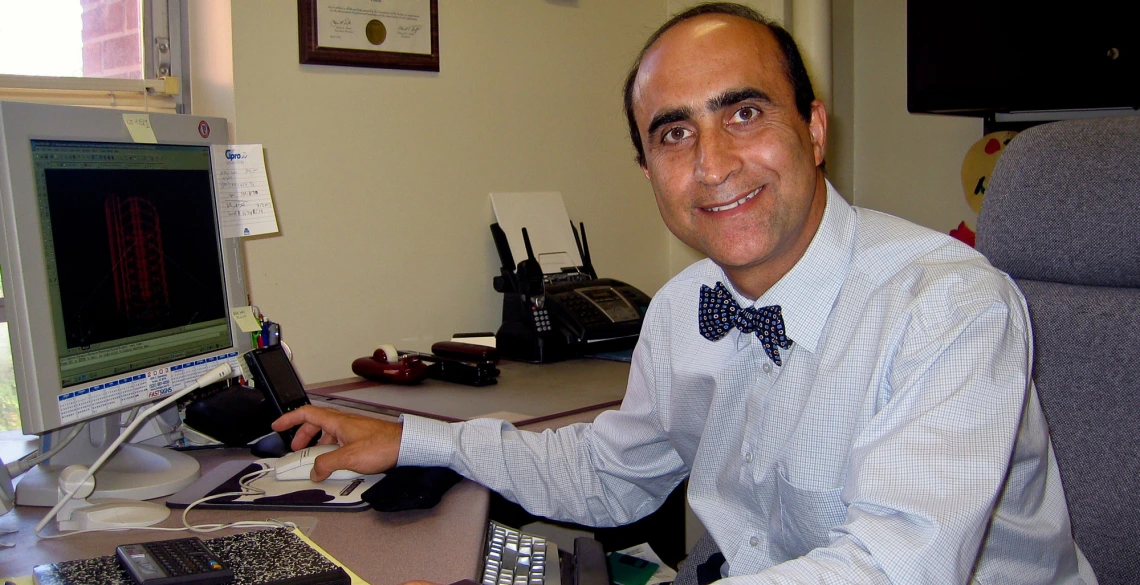Engineering Professor Offers Free Engineering Services for Haiti Victims
"Magic wallpaper" can help rebuild Haiti’s earthquake-damaged structures.

Mo Ehsani, QuakeWrap president and UA professor of structural engineering.
As aftershocks continue to rock Haiti, a University of Arizona engineering professor who runs a structural engineering company has offered to send earthquake engineers to Haiti and to provide engineering consultation, both free of charge.
Professor Mo Ehsani of the Department of Civil Engineering and Engineering Mechanics is president of Arizona-based QuakeWrap Inc., which has developed a structural repair system that can be installed on existing buildings and bridges to make them earthquake-resistant. In Haiti’s case, earthquake-damaged buildings could be retrofitted and made stable.
Ehsani describes the QuakeWrap system as carbon and glass fabric saturated with epoxy resin and applied to the structure. “Like magic wallpaper,” Ehsani said. The materials, known as fiber-reinforced polymer, or FRP, cure in 24 hours and become three times stronger than steel, said Ehsani. “The fabric works as if you were applying the reinforcing steel right on the outer surface of the wall.”
"The ease of application of FRP lends itself to a good post-earthquake repair technique where some of the buildings may have survived the initial quake but are unsafe for the aftershocks that may follow,” Ehsani said.
The actual logistics of providing this support have yet to be worked out, although the U.S. Navy has already contacted Ehsani about using a QuakeWrap product called PileMedic to repair damaged piles in Port-au-Prince. Ehsani is hopeful that the Navy contact might lead to further contacts with local engineers.
Remote Diagnosis
With fresh water and sewage systems impaired in Haiti, Ehsani is also waiving engineering consultation fees on the design of systems using the PipeMedic technology for repair of pipes used in water and sewer lines.
“We can work with the local engineering community if they can send us pictures and other information about the damage,” Ehsani said, adding that QuakeWrap engineers frequently use this method of remote diagnosis. “We have clients all over the world, so this is not unusual,” Ehsani said. “We often do it this way. People send us pictures; we talk on the phone and communicate over the Internet. We exchange e-mails, pictures and drawings, and determine whether we can do a retrofit. We are experienced at fixing things from a distance. It’s normal modus operandi for us.”
“Alternatively, once all the dust has settled, we are willing to send a couple of engineers for a few days to inspect the buildings and determine if they are candidates for repair and retrofit.”
Ehsani is a leading authority in earthquake restoration using FRP to bring damaged buildings back to service. His designs were used to restore unusable buildings damaged in the 1964 Good Friday earthquake in Anchorage, Alaska, and in the 1994 Northridge earthquake in southern California.
Ehsani has invited any organizations to contact him at 520.791.7000 to discuss how he can help restore the infrastructure of Haiti.
Ehsani founded QuakeWrap Inc. in 1994. He has been featured on CNN, The History Channel, and National Public Radio for his expertise on the strengthening of structures, particularly related to earthquakes, terrorist attacks and other potential structural disasters.

